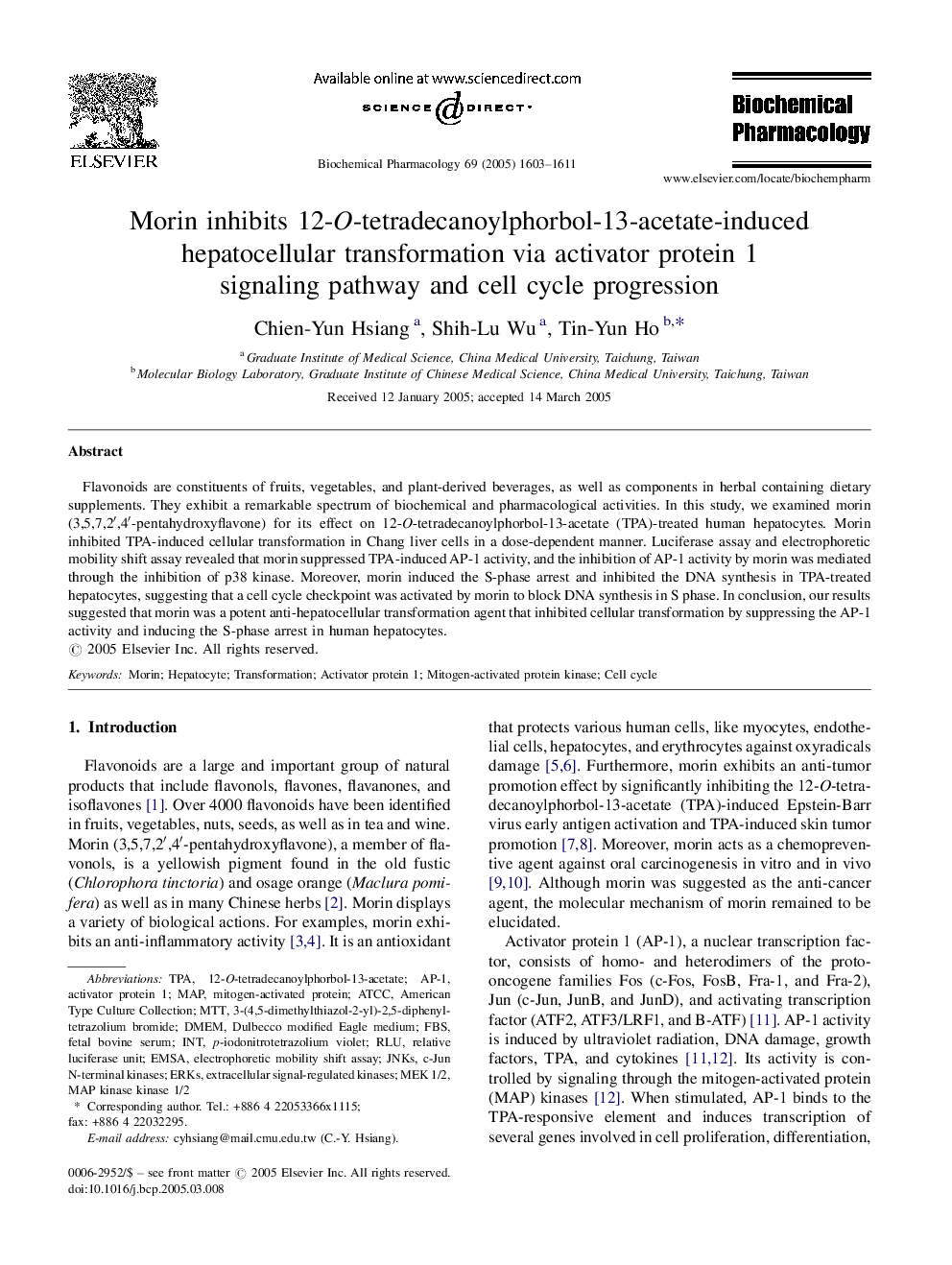| Article ID | Journal | Published Year | Pages | File Type |
|---|---|---|---|---|
| 9002074 | Biochemical Pharmacology | 2005 | 9 Pages |
Abstract
Flavonoids are constituents of fruits, vegetables, and plant-derived beverages, as well as components in herbal containing dietary supplements. They exhibit a remarkable spectrum of biochemical and pharmacological activities. In this study, we examined morin (3,5,7,2â²,4â²-pentahydroxyflavone) for its effect on 12-O-tetradecanoylphorbol-13-acetate (TPA)-treated human hepatocytes. Morin inhibited TPA-induced cellular transformation in Chang liver cells in a dose-dependent manner. Luciferase assay and electrophoretic mobility shift assay revealed that morin suppressed TPA-induced AP-1 activity, and the inhibition of AP-1 activity by morin was mediated through the inhibition of p38 kinase. Moreover, morin induced the S-phase arrest and inhibited the DNA synthesis in TPA-treated hepatocytes, suggesting that a cell cycle checkpoint was activated by morin to block DNA synthesis in S phase. In conclusion, our results suggested that morin was a potent anti-hepatocellular transformation agent that inhibited cellular transformation by suppressing the AP-1 activity and inducing the S-phase arrest in human hepatocytes.
Keywords
ATCCEMSAp-iodonitrotetrazolium violetrelative luciferase unitJNKsDulbecco Modified Eagle MediumRLUAP-1int12-O-tetradecanoylphorbol-13-acetatetPADMEMFBS3-(4,5-dimethylthiazol-2-yl)-2,5-diphenyltetrazolium bromidec-Jun N-terminal kinasesERKsMTTElectrophoretic mobility shift assayTransformationfetal bovine serumAmerican Type Culture CollectionMorinmapHepatocytemitogen-activated proteinactivator protein 1mitogen-activated protein kinaseCell cycleextracellular signal-regulated kinases
Related Topics
Health Sciences
Pharmacology, Toxicology and Pharmaceutical Science
Pharmacology
Authors
Chien-Yun Hsiang, Shih-Lu Wu, Tin-Yun Ho,
